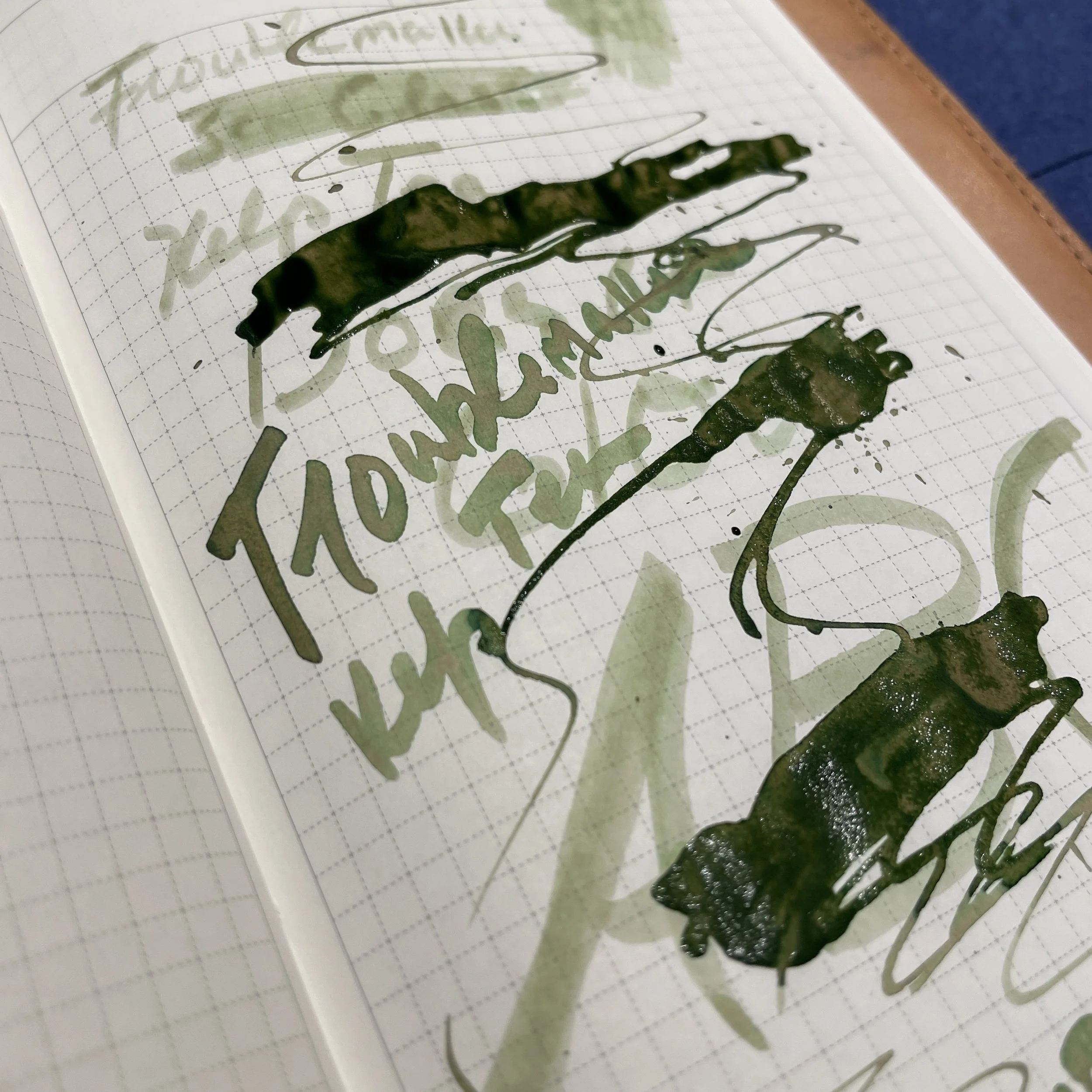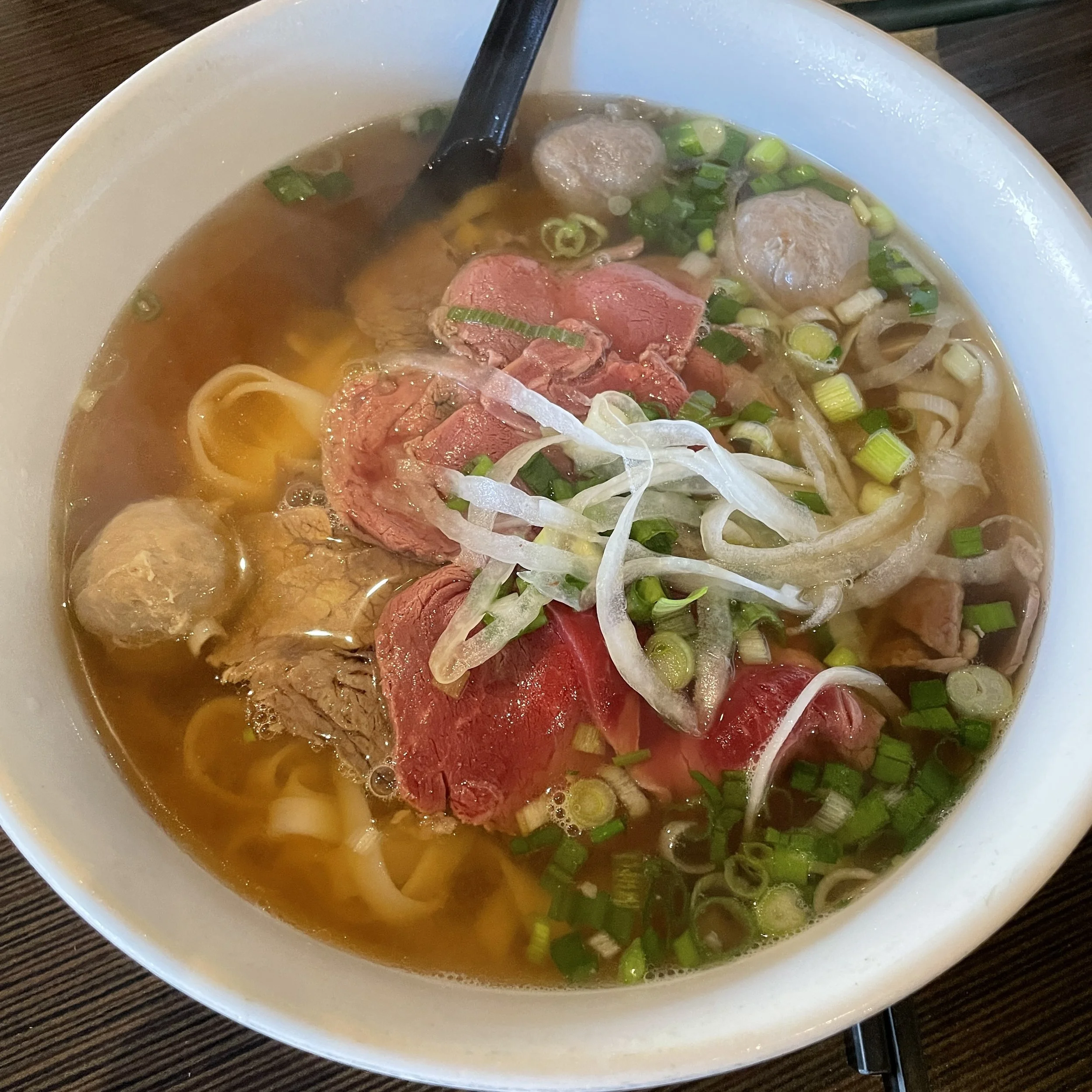There is a key difference between the San Francisco Pen Show and pretty much every other pen show out there: Other legacy pen shows are primarily geared towards the “collector” or “hobbyist,” whereas the San Francisco Pen Show goes out of its way to appeal to true enthusiasts, or those who see stationery as an integral part of their life. Sure, there’s a lot of buying, selling, and trading - I enjoy those things as much as anyone and shows are a great place to indulge - but it begs the question: what do you do with it all? For those looking to lean heavily into analog and incorporate it even further into their daily routine, this past weekend offered a lot.
The Nib Tailor (JC Ament) setting up on Friday. Note the space surrounding the table.
Creating a More Easily Navigable and Enjoyable Show Experience
Let’s start with the basics: the San Francisco Pen Show is incredibly well-run. The organizers carefully think through everything, from table layout to aisle spacing to food and after-hours events. And while the show itself is carefully planned, there’s still enough flexibility to allow vendors to experiment with the user experience. For example, this year Atelier Musubi “inverted” their three tables into a horseshoe shape, essentially creating a “shop” where you could walk in and explore their offerings. (You can watch my walkthrough video here.) The ballroom certainly became crowded at points during the weekend, especially on Saturday, but I never witnessed the kind of congestion and table backups I’ve seen at many other shows, except maybe at the Toyooka Craft table on Friday, which is another story…. More on that below.
I basically learned to make an inky mess at Leigh’s first class (Mad Scientist Mode).
Seminars, Meetups, and Classes Throughout the Weekend
While most pen shows these days offer classes and seminars, the roster is fairly predictable and rarely ventures beyond vintage-pen education (repair, history, etc.) and calligraphy. Don’t get me wrong - these events should exist and often see strong attendance, but the range of interests in the pen community is far more diverse. An example of what else is possible: San Francisco featured free seminars that included an “Introduction to System Techo” (i.e., how to use Japanese-style notebook systems) and “Paperchase!”, a paper-related class by Daryl Lim of notebook-maker Atelier Musubi. In addition to calligraphy, paid classes included multiple journaling workshops, a class on sketchnoting, class on travel sketching and ink washing, a workshop on modifying Pilot Parallel calligraphy pens, and more.
Please don’t balk at paying class “tuition”. In addition to compensating the teachers for the time spent in organizing and putting on the seminar, it often includes a full toolkit that you can take home to continue whatever it is you learn that day.
As I noted on Saturday, I attended two journaling workshops: “Mad Scientist Mode ON” and “Notes to Self” by Leigh Reyes, both of which were excellent and focused on visual and nontraditional journaling exercises, in addition to just having fun playing with inks an paper in ways most people wouldn’t think you could. I also sat in on the System Techo seminar by April from DesignPhil (parent company of Traveler’s Company and Plotter USA), which I found fascinating as she not only talked about products but the results of the interviews they conducted with individuals who used them. I came away with plenty of ideas not just for more content I can bring you but how I plan to use my own notebooks more on an everyday basis. Finally, I attended “Every Paper Has Its Origin Story,” by Taizo Yamamoto (of Yamamoto Paper) and Bruce Eimon, which allowed participants to sample and learn the details/origins of eighteen different Japanese specialty writing papers. (I visited the Yamamoto Paper table after the class and took home samples of ten of them - there’s a LOT out there beyond Tomoe River, and I personally wouldn’t have known about any of them absent this class.)
I spent some time exploring the ink racks at the Dromgoole’s tables, and ended up coming away with some Wearingeul inks. (Finally!)
And, of Course, There Was Shopping
The San Francisco Pen Show is famous for drawing vendors and brands from Japan, and while this year’s show didn’t quite hit pre-2020 levels of international attendance, Toyooka Craft, Nagasawa, and Bungubox all attended the show. Bungubox and Nagasawa brought plenty of exclusive pens and inks, and Nagasawa was running some crazy promotions on Sunday as they certainly didn’t want to carry any of it home to Japan. As you may have heard, the Toyooka Craft table was more or less stripped bare of all the pen chests and larger items by noon on Friday! Given the size of a wooden pen chest, it wasn’t something that I planned to carry home with me cross-country, but it would’ve been nice to have a look, y’all. :)
No, I didn’t buy all this ink. Someone had a “free ink” box that was being passed around and I grabbed a handful of bottles and paid the rest forward. The things you see at pen shows!
I won’t go through the roster of show vendors who attended - you can view that on the show website - but I will make a general observation that I enjoyed seeing a focus on notebooks and paper that can be lacking at other shows. In addition to Traveler’s Company and Plotter USA (which make Japanese-style planner/journal systems and related products), Yamamoto Paper had two large tables full of specialty papers in both samplers and full-size pads and notebooks, and Atelier Musubi completely sold out of their high-end journals and notebooks. While people certainly bought pens, there was a level of excitement around the paper and paper-related events that I had not seen before at other shows.
Nagasawa brought all of their Kobe inks (Sailor inks in colors drawing on locations in Kobe, Japan), as well as many limited and special edition pens. This was a very popular table throughout the weekend.
Takeaways from the 2022 San Francisco Pen Show
If you can’t tell already from my Saturday recap and the discussion so far, I thoroughly enjoyed the 2022 San Francisco Pen Show. In order to stay relevant to the modern enthusiast, I would argue that pen shows need to accommodate a broader range of vendors and events, including more classes and seminars that focus less on acquisition and more on use. Shopping is fun, but the items I buy are meaningless to me if I don’t do anything with them. That said, I plan to do a further post this weekend highlighting what I picked up and why, as well as some nib grinds I had done. (I still have not finished unpacking.)
If my show description isn’t enough to draw you to the San Francisco Pen Show, I hope this is. Did I mention there’s a great food scene?
Will I be back in San Francisco? Absolutely. I try to plan my “show calendar” at the beginning of each year, and during that process identify the 2-3 shows that are “must-attend” events for me. After two consecutive “excellent” shows, San Francisco will replace D.C. at the top of my list in terms of priority scheduling, and I’m strongly considering reserving a table or two when registration opens back up for 2023.
The Gentleman Stationer is supported entirely by purchases from the T.G.S. Curated Shop and pledges from via the T.G.S. Patreon Program. This post does not contain paid sponsorships or affiliate links.

